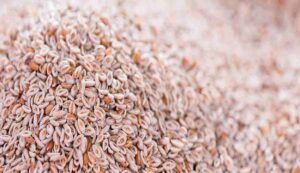Cultivation of Isabgol: Farmers will become rich by cultivating this crop, know how much profit they will make
Cultivation of Isabgol: Large amounts of isabgol are grown in Rajasthan’s Nagaur district. Farmers who grow it are becoming wealthy. Isabgol is not available everywhere since it is only grown in a few regions, notably Nagaur. Its cultivation is said to be best suited for loamy soil with a good drainage system; higher yield is achieved when the pH is between 6.0 and 7.0. Before growing it in sandy or brown soil, according to agriculture expert Rajendra Singh, the soil should be fertilized by adding organic manure, such as compost or cow dung manure.

Rajendra Singh, an expert in agriculture, advised choosing seeds from a better variety for Isabgol production. Seeds of improved varieties such as Kisan Pusa Utkarsh, Arka Kartik, or Pant Anupama may be used to cultivate it. These cultivars are resistant to disease and produce more. He advised treating the seeds with a fungicide before planting. Its seeds have to be planted 30 to 45 cm apart in rows. In addition, the isabgol crop sometimes needs insecticides, weed control, and watering.
The profit is this
When the isabgol crop is ripe, one acre may produce 80 to 100 quintals, according to agriculture expert Rajendra Singh. In the market, it costs between Rs 8,587 and Rs 15,000 a quintal. For the farmers, it is a beneficial arrangement in this case. For farmers that make money via conventional farming, this is an excellent harvest. Production in this farming may be further boosted by using cutting-edge technologies. Nagaur’s atmosphere is conducive to isabgol farming. It is grown here in great numbers for a purpose.
What is Isabgol used for?
Suraj Chaudhary, a health specialist, claims that isabgol contains soluble fibers that help relieve diarrhea by absorbing excess water in the digestive tract. By thickening your stool, isabgol helps you have fewer bowel motions. In addition, isabgol is used in the production of Ayurvedic medications. It is a plant used for therapeutic purposes.

